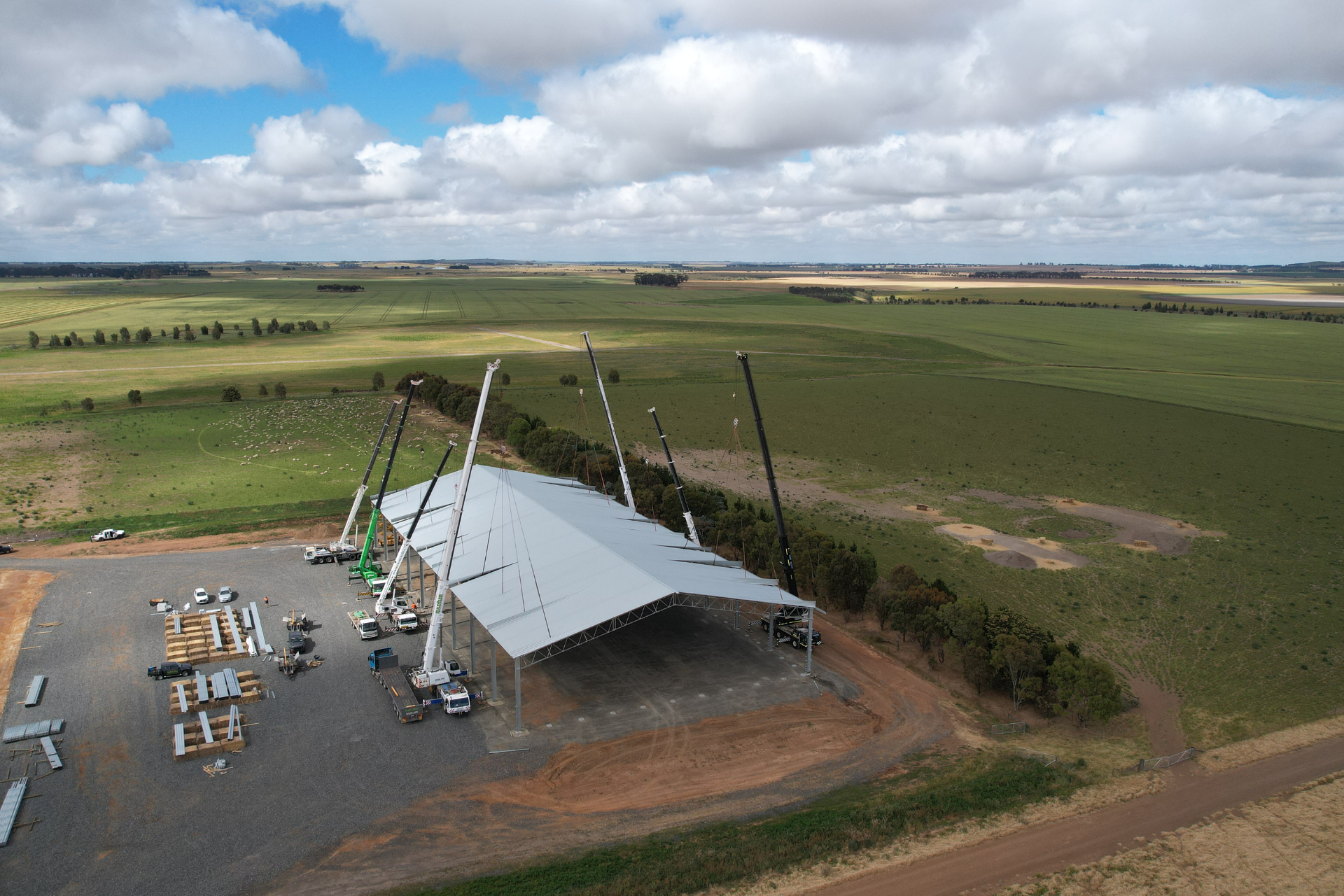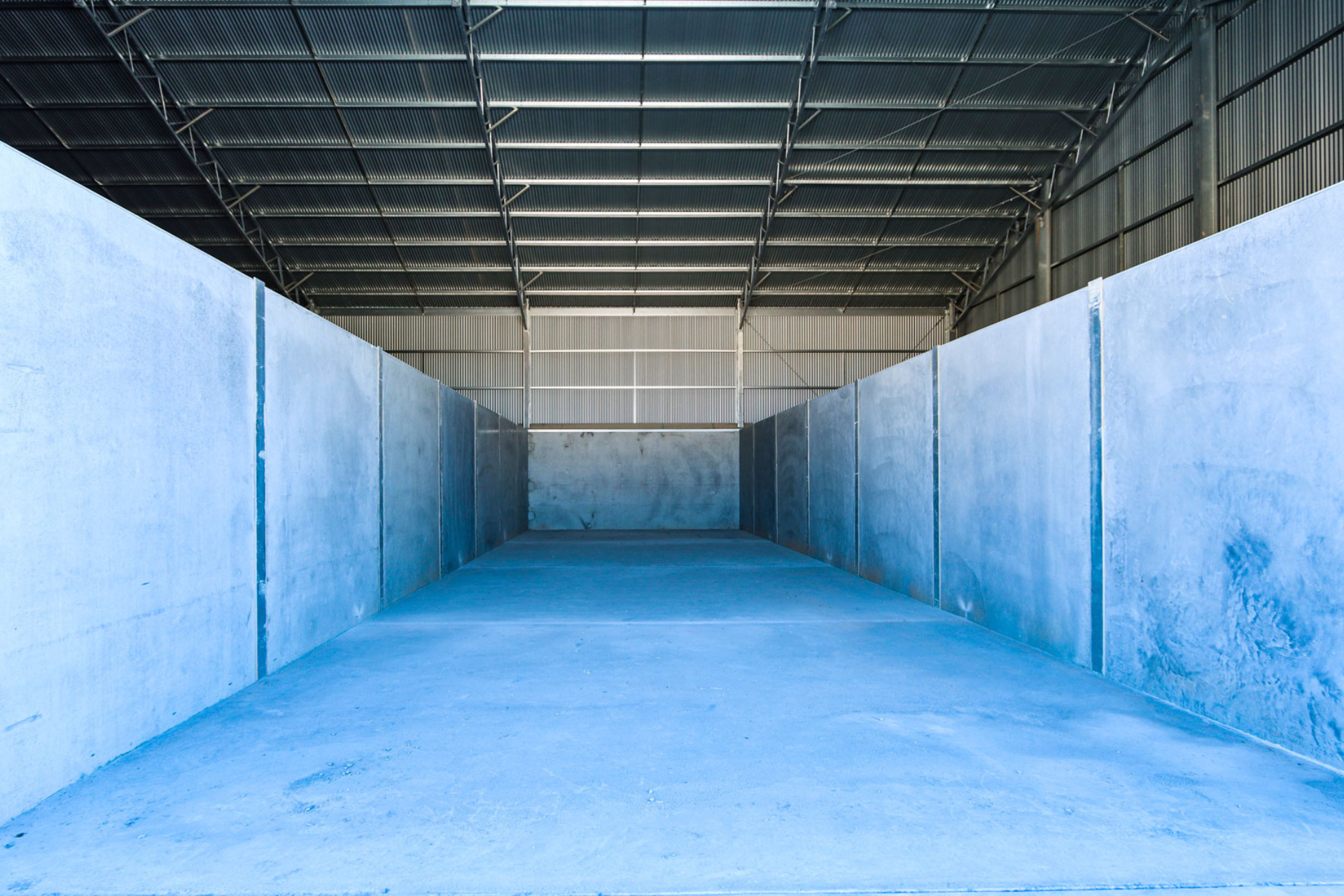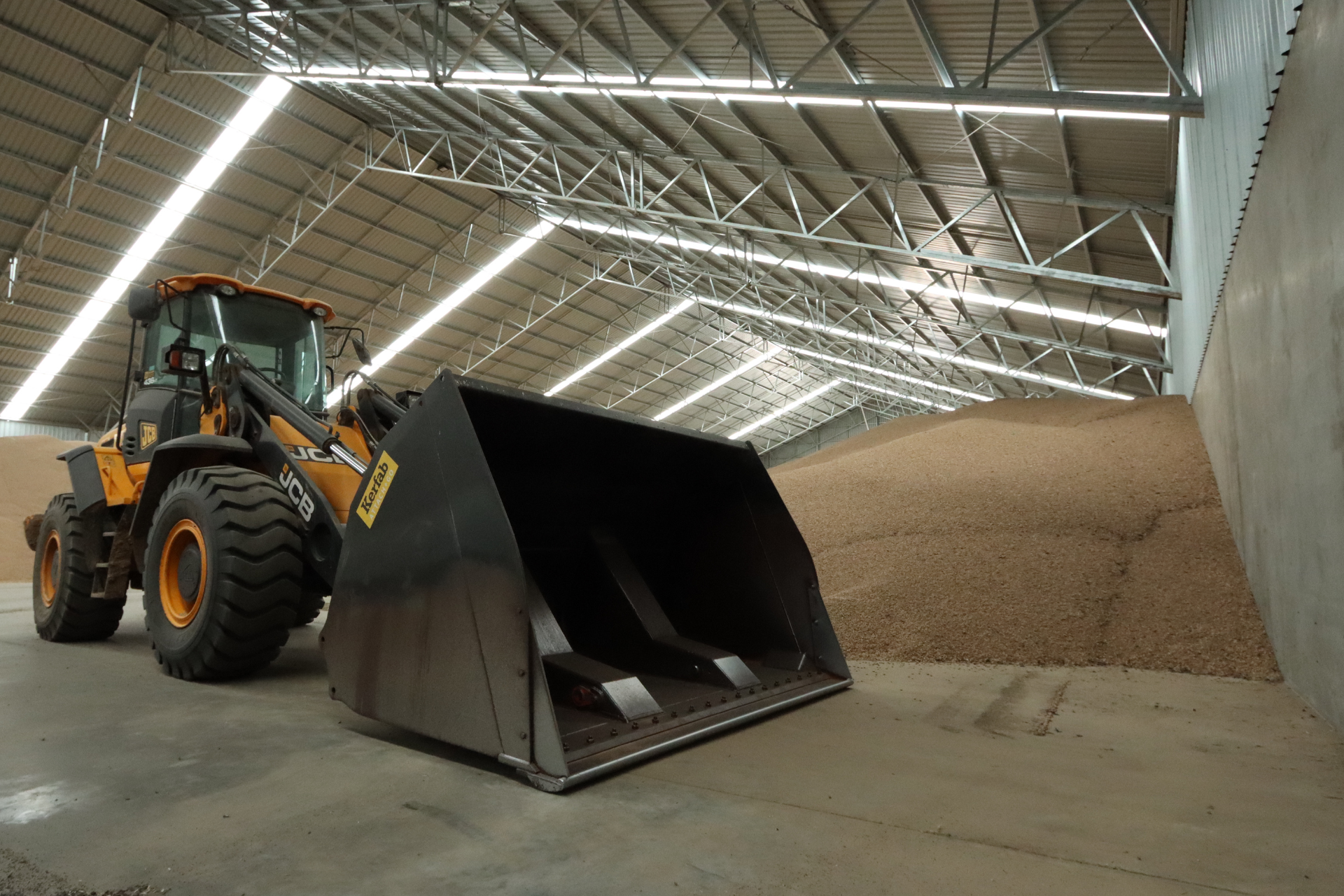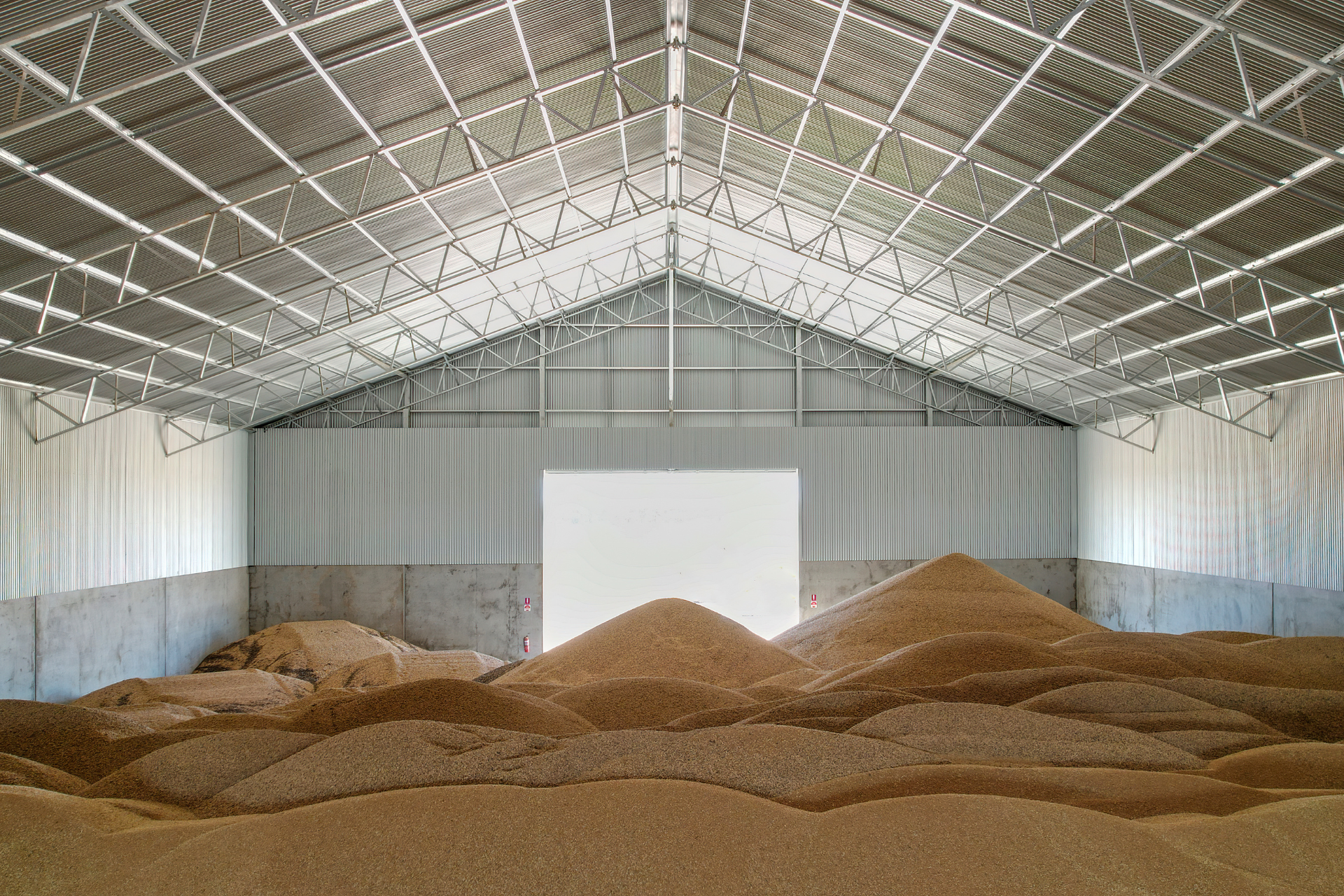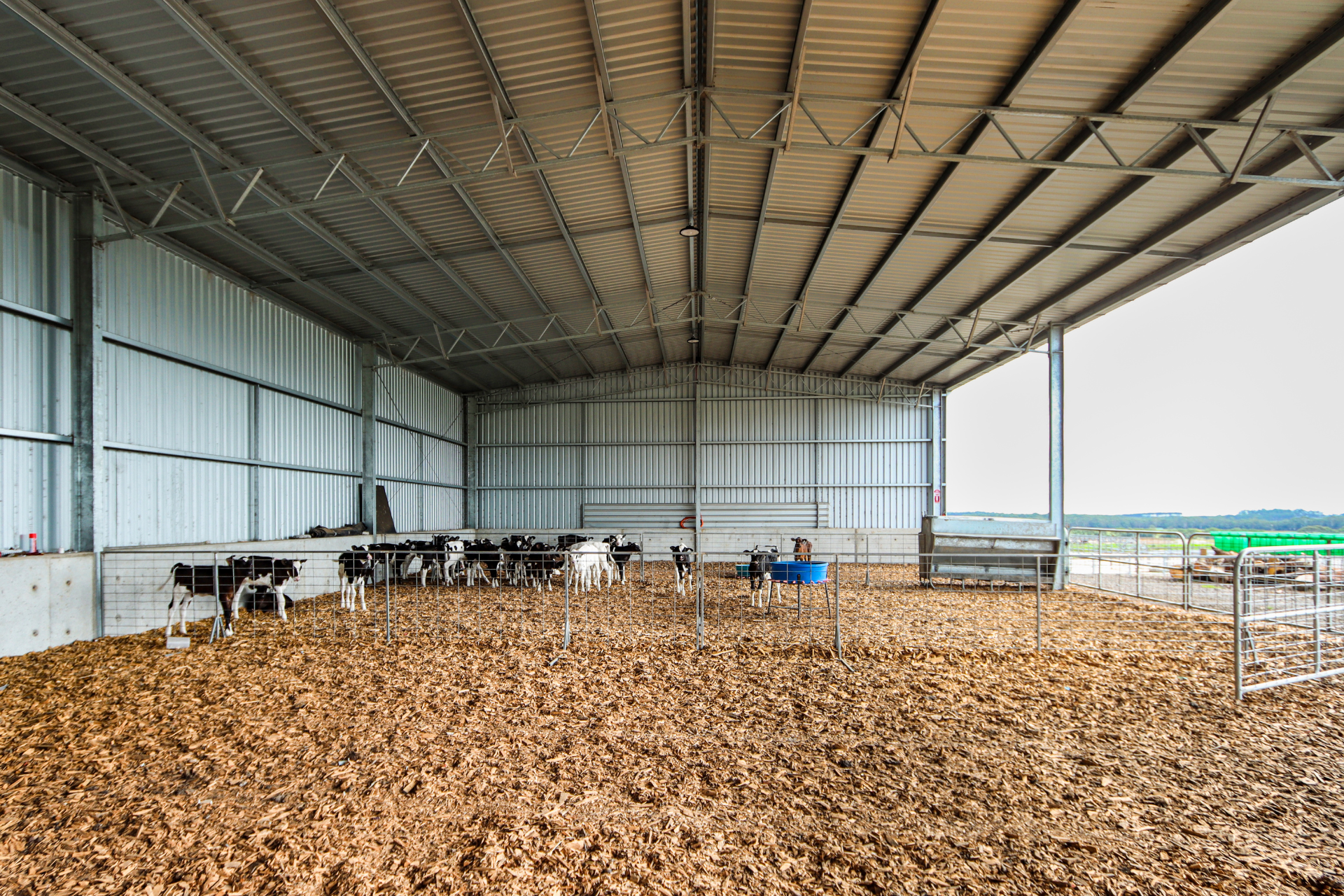Building a grain shed? Grain sheds for on-farm storage have been extremely popular this year thanks to several bumper seasons and high prices. Grain growers are recognising the importance of being able to store grain on-farm, whether it is in silos, bunkers or grain sheds – it pays off!
With the demand for new grain sheds increasing, so too have the questions – some of the commonly asked questions include; what size grain shed do I need? And, what is the best grain shed design? Building a grain shed can be a significant project and outlay, therefore it is important to get details like size and design right.
So, to help you make an informed decision when buying your grain shed, we have answered the top 10 questions we are asked about building a grain shed.
We hope you find the article helpful, and remember we are more than happy to answer any other questions you might have about your grain shed build.
First, let’s talk about shed size and capacity.
1. What Size Grain Shed Do I Need? How Much Grain Will I Be Able To Store In My Shed?
Capacity is one of the most important aspects of any storage shed, and a grain shed is no different. A lack of storage space can not only be stressful, it could also cost you money – so it is important to get grain shed sizes right!
So, what size grain shed do you need? Use the grain storage calculator below to find out! Simply enter the shed size you are considering, and the type of grain being stored, and the calculator will work out the rest
Put in your shed size and grain type in the left side fields and the storage volume and total tonnage will be displayed on the right.

For more information on grain sheds sizes, angle of repose, bulk density, recommended wall heights, roof pitch and other details to consider when determining the size of your grain shed, read our article – What Size Grain Shed Do I Need?
2. How Much Does It Cost To Build A Grain Shed?
Grain shed prices! Usually, the first question when considering building a grain shed is – how much will it cost?
To help you budget for a new grain shed build, below are some popular grain shed sizes and an approximate cost-per-tonne.
- A 30m x 18m grain shed stores 1,500 tonnes and costs approx. $150 – $190 / tonne
- A 36m x 24m grain shed stores 3,000 tonnes and costs approx. $130 – $160 / tonne
- A 56m x 27m grain shed stores 6,000 tonnes and costs approx. $100 – $135 / tonne
- An 80m x 30m grain sheds stores 10,000 tonnes and costs approx. $85 – $115 / tonne
Remember these are approximate price ranges only and the cost of your grain shed build will depend on factors like shed design and site location.
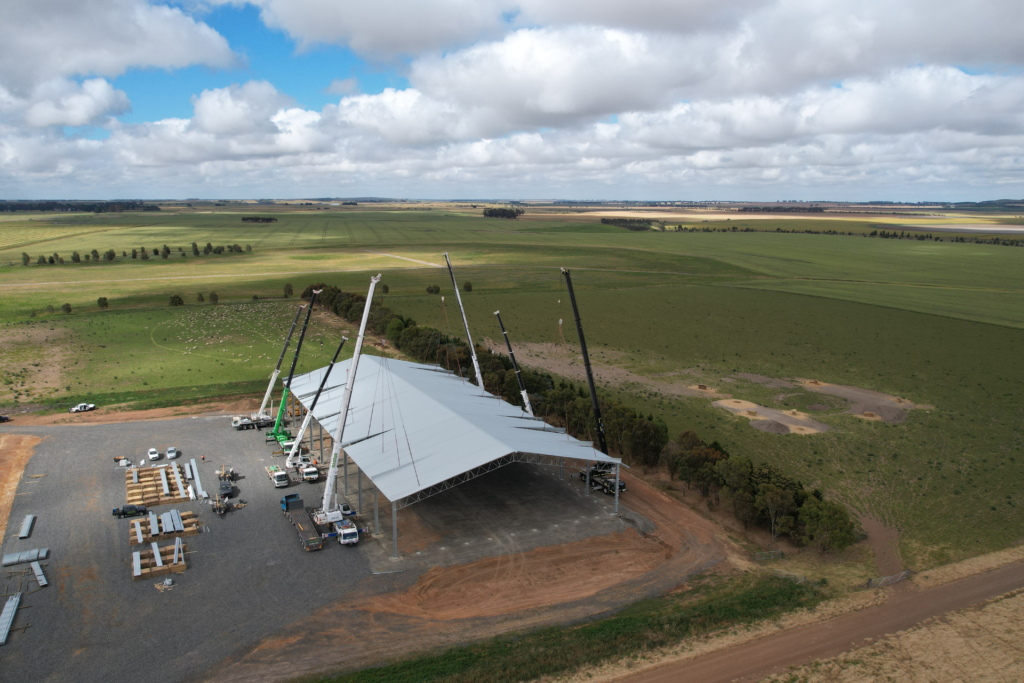
3. What Is The Best Way To Store Grain? Should I Store My Grain In A Shed?
Should you be storing your grain in a shed? There are a variety of storage options for grain including sheds, silos and more temporary options such as grain tarps – but which is best? Typically, the best way to store your grain depends on the type of grain you are storing and how long you intend to store it.
Grain sheds, like all storage options, have both advantages and disadvantages, and it is worth noting that not all types of grains are suited to shed storage. For example, while grains like feed grade wheat, faba beans, canola and barley can be safely and effectively stored in grain sheds, high-value grains or grains that cannot have protectants applied are better suited to silo storage.
If you think a grain shed would suit the type of grain you will be storing, there are plenty of advantages to keep in mind, including:
- A fully-enclosed grain shed effectively protects grain with all-weather protection.
- Good ventilation and airflow are easily achieved in a grain shed. There are a number of ventilation options for humidity and temperature control.
- Improve logistical efficiencies and facilitates fast storage at harvest reducing interruptions and delays.
- Barriers such as concrete walls can be erected between different sorts of grain for cross-contamination control. If strict segregation is important, silos may be the better option.
- A concrete floor and sealed, secure walls ensure effective vermin and pest control. Baiting can also be used effectively when storage is permanent.
- Safety is another advantage of a grain storage shed, particularly in comparison to silos, having little or no risk of death or injury if used appropriately.
The main disadvantage of a grain shed is that a shed has the highest initial cost of all your grain storage options. However, this is offset by the low cost per tonne, service life and the versatility of a grain shed, for example, a grain shed could also be used to store hay or machinery when grain storage is not a requirement.
Next up we discuss grain shed design. Which is best?
4. What Is The Best Grain Shed Design?
There are three grain shed designs that are the most common – inside-out grain sheds, fully-enclosed concrete panel grain sheds and open front grain sheds – and each design has both advantages and disadvantages.
So, which is best? We discuss each of the three main grain shed designs, below to help you decide.
An ‘inside-out’ grain shed is a shed that is constructed with iron installed to the inside of the shed rather than the outside.
This type of building provides a clean skin inside the shed for minimal dust collection. It is common to see any type of cereal grain stored in this type of shed, however fertilizer storage is not recommended due to the risk of corrosion.
A common challenge often raised with an inside-out grain shed design is the potential damage to the iron when a loader is in use. To prevent this from happening we recommend installing a concrete plinth around the edges of the shed in conjunction with the slab.
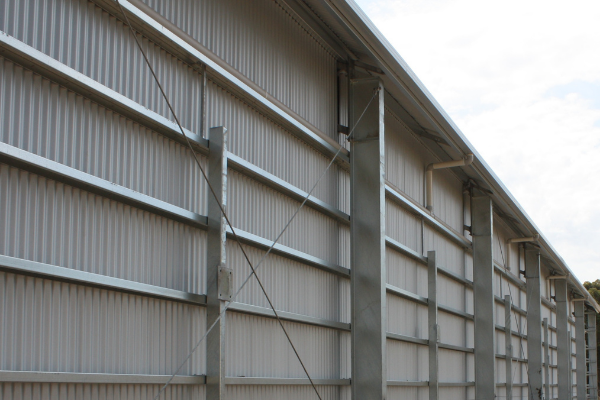
A fully enclosed concrete panel grain shed is typically considered the most secure and effective way – and also the more expensive option – to store grain in shed. The shed construction incorporates pre-cast concrete panel walls fastened to the inside of the shed columns, most commonly at 3 metres high.
The main advantage of this construction is the seal the shed walls have at ground level, providing an effective barrier against pests. A concrete panel grain shed also has the added flexibility of fertilizer storage, due to concrete walls being able to withstand its corrosive nature.
Finally, for grain storage where a fully enclosed shed is not a requirement an open front grain shed is a cost-effective and versatile choice. Constructed with either concrete panel or iron walls on the three enclosed sides, and open on the third side this configuration provides plenty of versatility for hay or machinery storage.
The best shed design for you will usually depend on your budget and the storage requirements for your grain such as dust control, grain pest prevention or airflow.
5. Does My Grain Shed Project Require Council Permits?
In Victoria, nearly all farm shed projects will require council permits, and this includes grain sheds. There are some exceptions to the rule but this does depend on factors like the shire council.
Read our article – Can I Build A Shed Without Permits? – to learn more about permit requirements and watch the video below to learn about the permit application process.
6. How Do I Prepare The Site For My Grain Shed?
Site preparation for your grain shed project is incredibly important. A well-prepared shed site ensures good drainage away from the shed and provides easy access to the shed, during and after the shed build.
In the video below, Ben, one of our project managers outline our top 10 tips for preparing the ideal shed pad.
7. How Much Do Council Permits Cost?
The cost for council permits varies from project to project depending on factors like shed size, project complexity and the local shire council.
To give you an indication of shed permit costs, in 2021 the average cost of permits for a farm shed built by Action Steel was $2,600.
For large scale grain sheds and complex projects, the permit process will be more involved and may require more paperwork such as fire design and access requirements, incurring additional administrative costs. This generally comes into effect for buildings over 2000m².
8. What Thickness Does The Concrete Slab In My Grain Shed Need To Be? How Much Will It Cost?
A concrete slab is an important component to a grain shed build, particularly helping to maintain a high level of storage hygiene in the shed. Our project team can arrange the supply and install of the concrete slab for your grain shed project.
If you are wondering how thick the concrete slab in your shed needs to be and how much it will cost, watch the video below in which Lester outlines slab thicknesses for farm sheds and provides an indication of how much these cost.
9. Can I Claim My Grain Shed As A Tax Deduction?
There are several ways that you can claim your shed as a tax deduction, provided you meet all the requirements.
The first way is to take advantage of the full instant asset write-off for fodder storage assets such as silos, grain sheds and hay sheds. However, to qualify for this incentive the main purpose of the asset must be to store fodder for the farmer’s own livestock, amongst other requirements which you can learn about here.
If your grain shed does not qualify for the fodder storage asset write-off, you may be able to take advantage of Temporary Full Expensing which has been extended to the 30th June 2023. Temporary Full Expensing allows the full cost of any eligible asset to be written off. You can further information on this from the Australian Taxation Office, here.
Please note these comments are general only, speak to a qualified accountant before making any decisions.
10. What Is The Leadtime For A Grain Shed Build?
One of the first questions we asked about grain sheds, is what is the lead time for a grain shed?
Our project schedule is regularly updated, and we determine time frames on a job-by-job basis so the lead time for a new grain shed build does vary from project to project. However, currently the average lead time for a new grain shed build is approximately 4 months.
If you are considering building a grain shed, we hope you have found these answers to the top 10 questions, useful! What questions have we missed? What else do you want to know about building a grain shed? Please don’t hesitate to get in touch with us if you have more questions about grain sheds, we’d love to help you!
You might also like to check out our Learning Hub for more articles like this along with shed brochures and videos.

